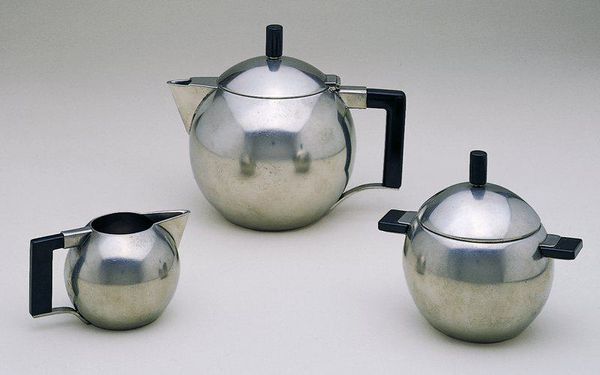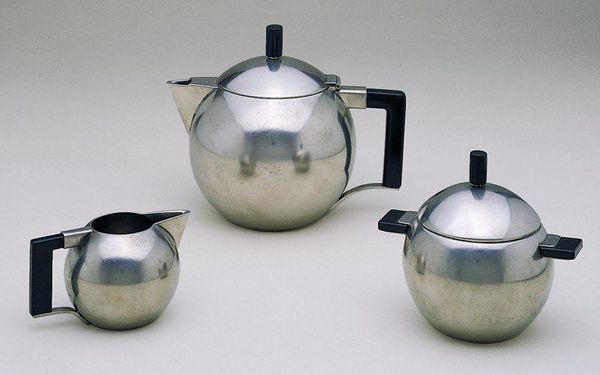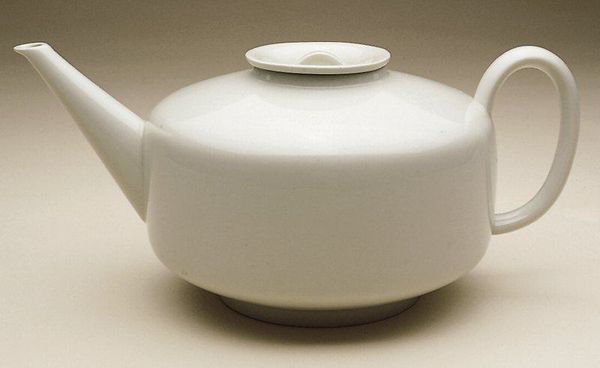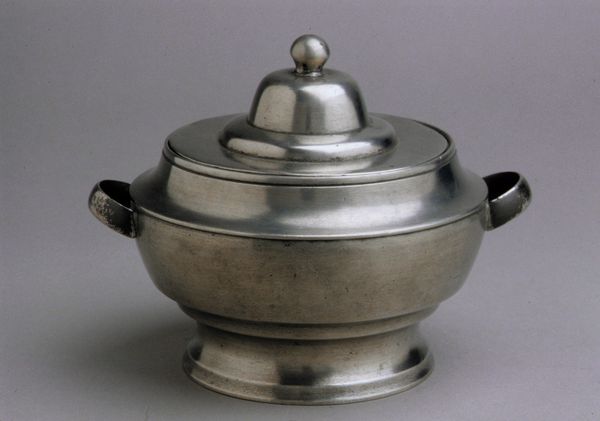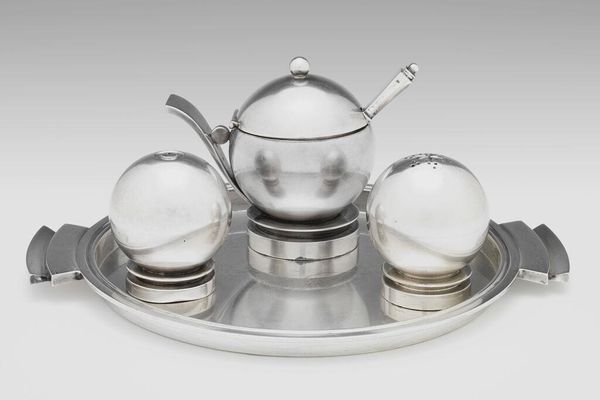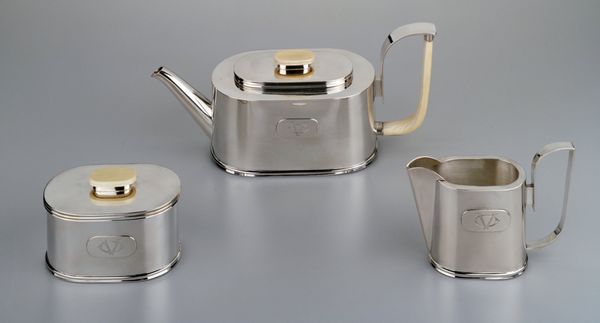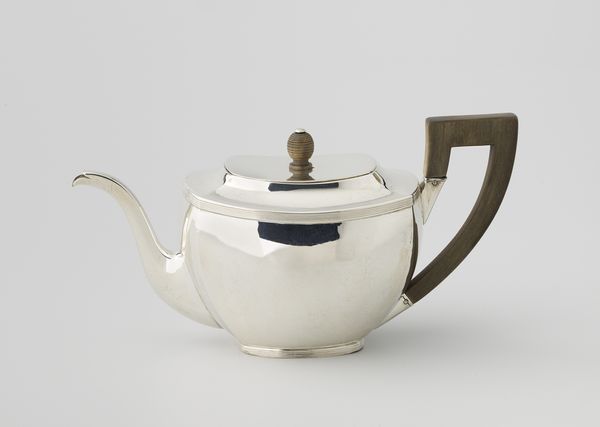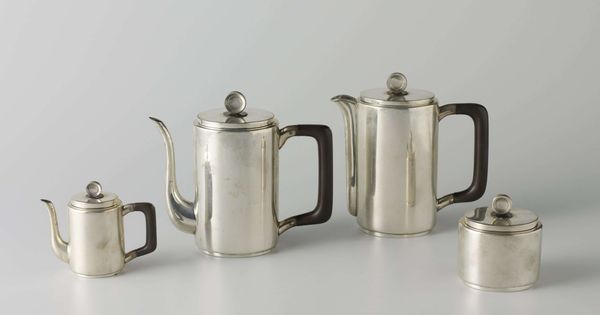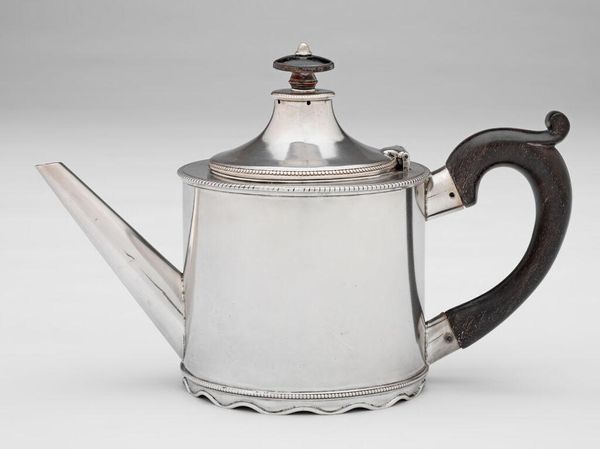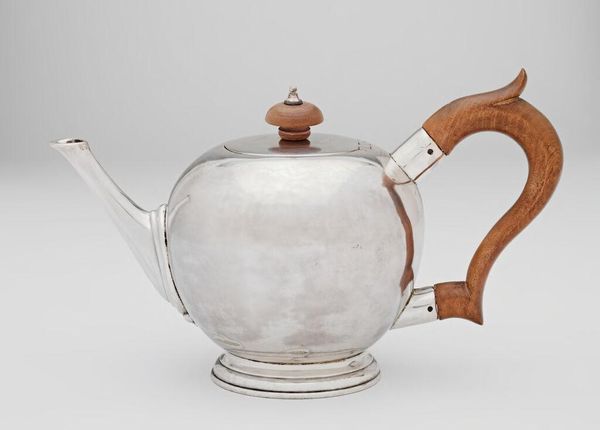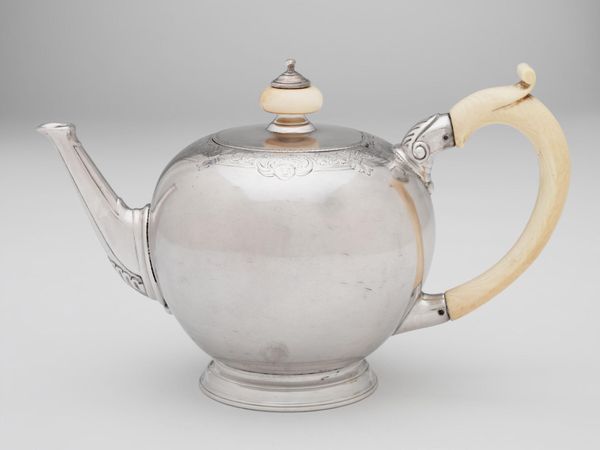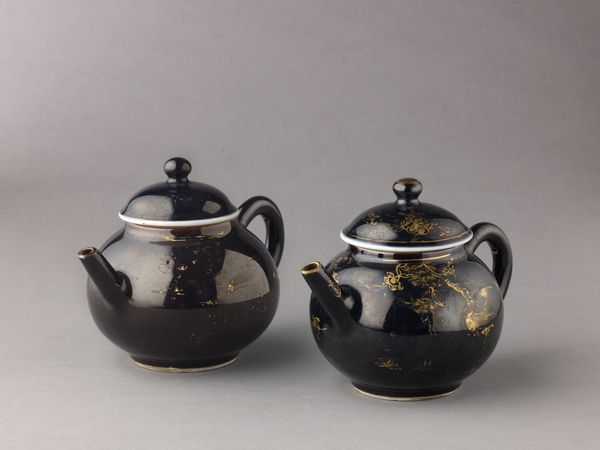
metal, ceramic
#
art-deco
#
metal
#
ceramic
#
ceramic
Dimensions: 4 5/8 x 5 1/8 x 4in. (11.7 x 13 x 10.2cm)
Copyright: No Known Copyright
This is a sugar bowl, part of a tea service, made by Theodore Hooft sometime before 1965. It lives at the Minneapolis Institute of Art. Hooft’s tea set feels cool to the touch, all steel and smooth surfaces. It's like an exercise in geometry. Spheres and cylinders collide in pursuit of functional elegance. The set is like a well-behaved Bauhaus experiment; each piece a lesson in the art of reduction. I like the small gestures, like the way the handle juts out at a right angle or the little black rod sitting on top like a full stop. The metal reflects the light, distorting it across its curved surface, like a funhouse mirror. Maybe Hooft was looking at Marianne Brandt when he came up with this set. She also played with functional form, making the ordinary not so ordinary. Art isn't made in a vacuum, but continues through conversation, each artist answering or responding to someone who came before.
Comments
minneapolisinstituteofart almost 2 years ago
⋮
The stark planar elements introduced by Gerrit Rietveld and members of the de Stijl movement (1919-1928) found their way into the work of several metalworkers. Inspired by a rational, intellectural approach to design, Hooft preferred simplified form, proportion and clarity. The unadorned, dull patina and squared-off handles of this tea set were produced at minimal cost: stylistic purity on a shoestring budget aimed at a deflated market. Few sets were produced, finding little favor with a public still preferring Empire and rococo-inspired designs.
Join the conversation
Join millions of artists and users on Artera today and experience the ultimate creative platform.
